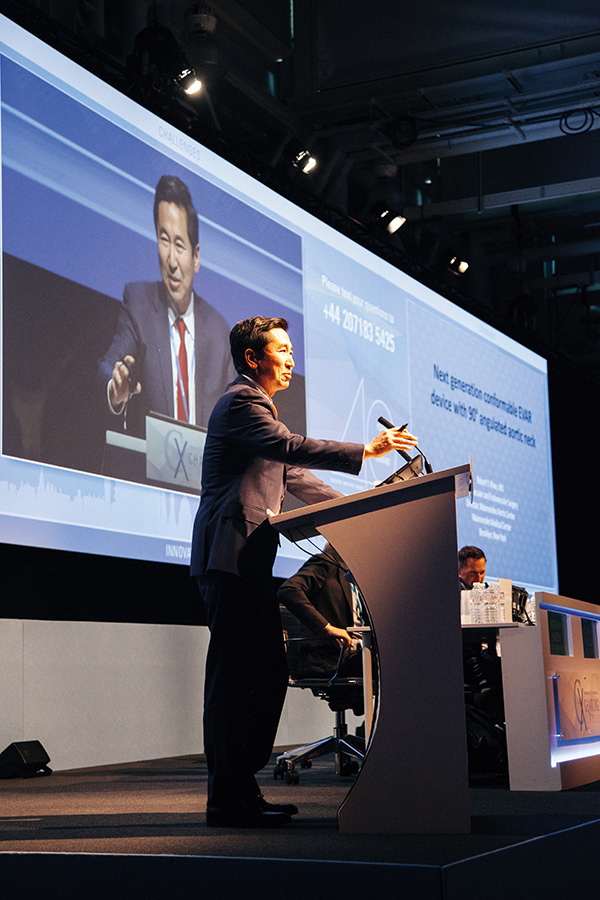
CX delegates were presented data from the first 10 EVAR patients treated using a new conformable device, the Gore Excluder conformable abdominal aortic aneurysm endoprosthesis with active control system, yesterday.
Robert Rhee (Brooklyn, New York), the national principal investigator of the US investigational device exemption (IDE) trial for the device, presented site-reported, procedural data for the first 10 patients. The new Excluder conformable device has the ability to conform to proximal neck angles up to 90° and achieve seal in short (greater than or equal to 10mm) proximal necks. It is repositionable and has a mechanism to adjust device angulation.
“One of the biggest challenges with EVAR is the sealing zone, especially in a hostile neck. The second iteration of the Gore Excluder device was designed specifically to address this issue so that the proximal neck is addressed in a fashion where the seal is allowed, without compromising the proximal neck. This device is specifically designed to conform to angulated neck and be adjustable so that you are able to use every millimetre of the neck,” Rhee stated.
“This next generation stent graft is the first truly ‘adjustable’ EVAR system for high-risk proximal sealing zones, such as highly angulated necks, because you are able to change the configuration and control the angle of the device to improve incomplete endograft apposition to the aortic neck. This incomplete neck apposition has been shown to increase the risk of endoleak formation after endovascular repair,” Rhee further explained.
He told delegates that cases where there could be anatomical challenges with apposition of the graft in the proximal landing zone are overcome by the conformable Excluder by controlling the proximal angle of the device.
The US pivotal trial is designed to assess the safety and effectiveness of the new generation Excluder device for the treatment of infrarenal abdominal aortic aneurysm, with the aim of gaining US FDA approval for the device.
The study will enrol at 51 US sites. There are two arms of study: one that includes patients with short necks (patients with aortic neck angulation of less than or equal to 60˚ and infrarenal aortic neck length greater than, or equal to, 10mm) and another that includes patients with a high aortic neck angulation between 60˚ and 90˚ and infrarenal aortic neck length greater than, or equal to, 10mm. The study will enrol 190 patients with 80 patients in the short neck arm and 110 patients in the high neck angulation arm.
“Site-reported data from the first 10 patients showed that the device performed as expected. There were no technical problems or difficulties. All the procedures were successful and there were no conversions to open repair, or additional procedures at treatment including angioplasty, stent placement, embolisation, thrombectomy, endostaples or other treatments,” Rhee said.
Providing further data, Rhee revealed that there are currently 35 patients enrolled in the study, with 32 patients in the short neck arm and three patients in the high neck angulation arm. “The 35 trial patients were successfully treated,” Rhee concluded.







